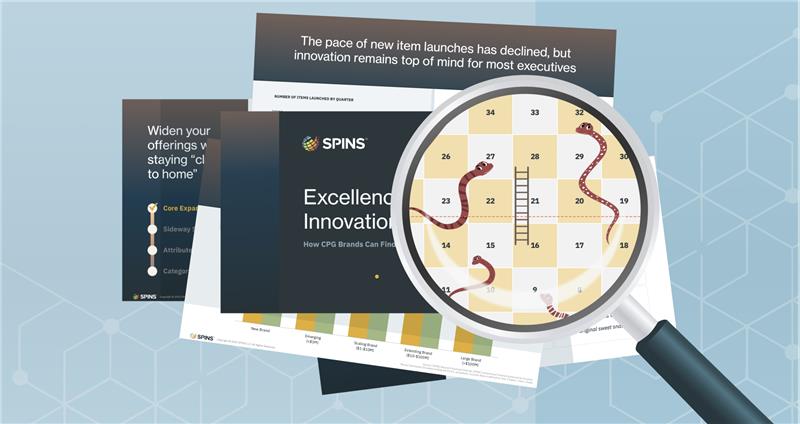4 Ways You Can Get Tactical With Store Level Data
For brands, getting access to the right data can be the difference between feeling like they’re in the dark and feeling like they’re in control. Store Level Data is one way brands are not only gathering more information about their product performance but are using it to adjust their tactics and build better relationships with retailers.
As we’ve mentioned before, conversations with retailers are enriched when you have relevant data on hand and are speaking to their concerns. SPINS Store Level Data is one way to arm your sales team with the necessary insights to confidently talk to retailers about joint growth opportunities.
What Is Store Level Data?
SPINS customers can gain access to the POS data for retailers where your products are sold. With this view, you are able to see where your products are being sold within the retail chain. For example, if Your Neighborhood Food Market has 30 locations you’ll learn that they are only carrying you in 10 locations, allowing you to understand where you’re being sold and where you aren’t. Then you can drill in further to understand how much product is on shelves in individual store locations.
The benefit of Store Level Data (SLD) is its tactical view into your retail accounts. It’s a necessary view to allow you to identify and tap growth opportunities within a retailer. Over the years, SPINS brands have found Store Level Data most valuable in these 4 use cases:
1. Identify Distribution Voids
When you look at how your products are performing store by store and within a region, you often find irregularities. This view will allow you to see where you have a distribution voids either within a location or across store locations. When you notice a distribution void, you can have a conversation with that retailer, using SPINS SLD, to understand if this is a conscience decision or an oversight.
2. Test and Learn Geographically
Because Store Level Data allows you to monitor performance by store and region, you can run trials before expanding your products, new messaging, or new sizes more broadly. Choosing a store or several stores in a region gives you the opportunity to learn how consumers will receive your product—giving you hard numbers to look at rather than just hypothesizing in team meetings. You might learn that your product performs extremely well at certain locations but not others or that your new flavor may resonate in some locations versus others. This is your chance to test and learn in a safe environment so you can either replicate your approach on a larger scale or customize your tactics for different audiences.
3. Launch Strategically
Launching new products is always an exciting and stressful process, and Store Level Data can bring much-needed structure to the process. Before you push a new product to every possible store and audience, you can begin with a select group of locations. Monitoring its performance on a small scale lets you learn in real-time and possibly adapt your rollout plans accordingly. This allows you and your team to have a grasp on consumer behavior and product performance so you can feel informed and set expectations based on actual data.
4. Review Promotion
After you run promotions—in-store sampling, end aisle displays, or price reductions—you can review how they affected sales in each location. You might find consistent performance across locations or discover regional differences. An in-store sampling in Chicago might have notably different results than one in Milwaukee, or a temporary price reduction could deliver a boost in sales across all nationwide locations. Store Level Data lets you refine your promotion talking plans and talking points before you meet with retailers.
Store Level Data can give you the valuable insights you need to move quickly and thoughtfully as you work with retailers. Brands that work with SPINS have found success with Store Level Data that allowed them to identify opportunities within existing retailers and action on it, driving 100%+ sales increases. If you’re interested in learning more about Store Level Data, contact us today.





